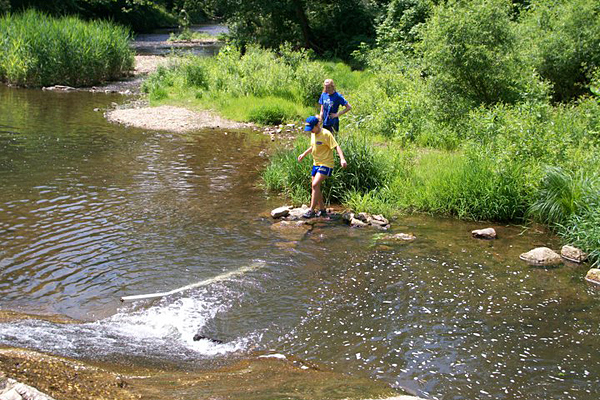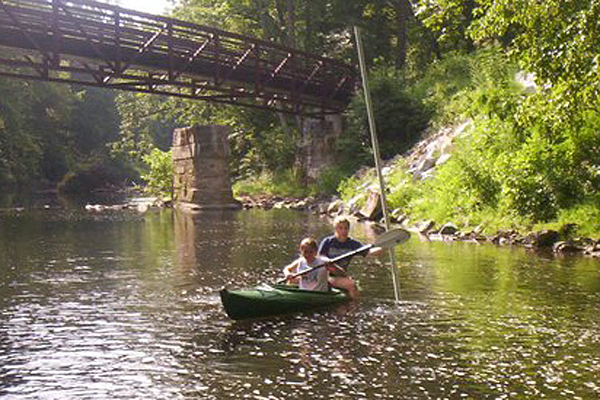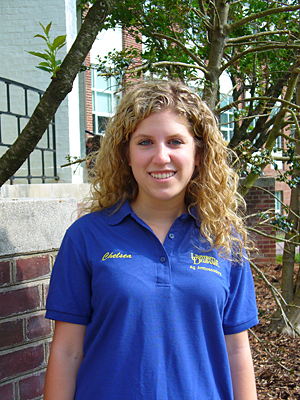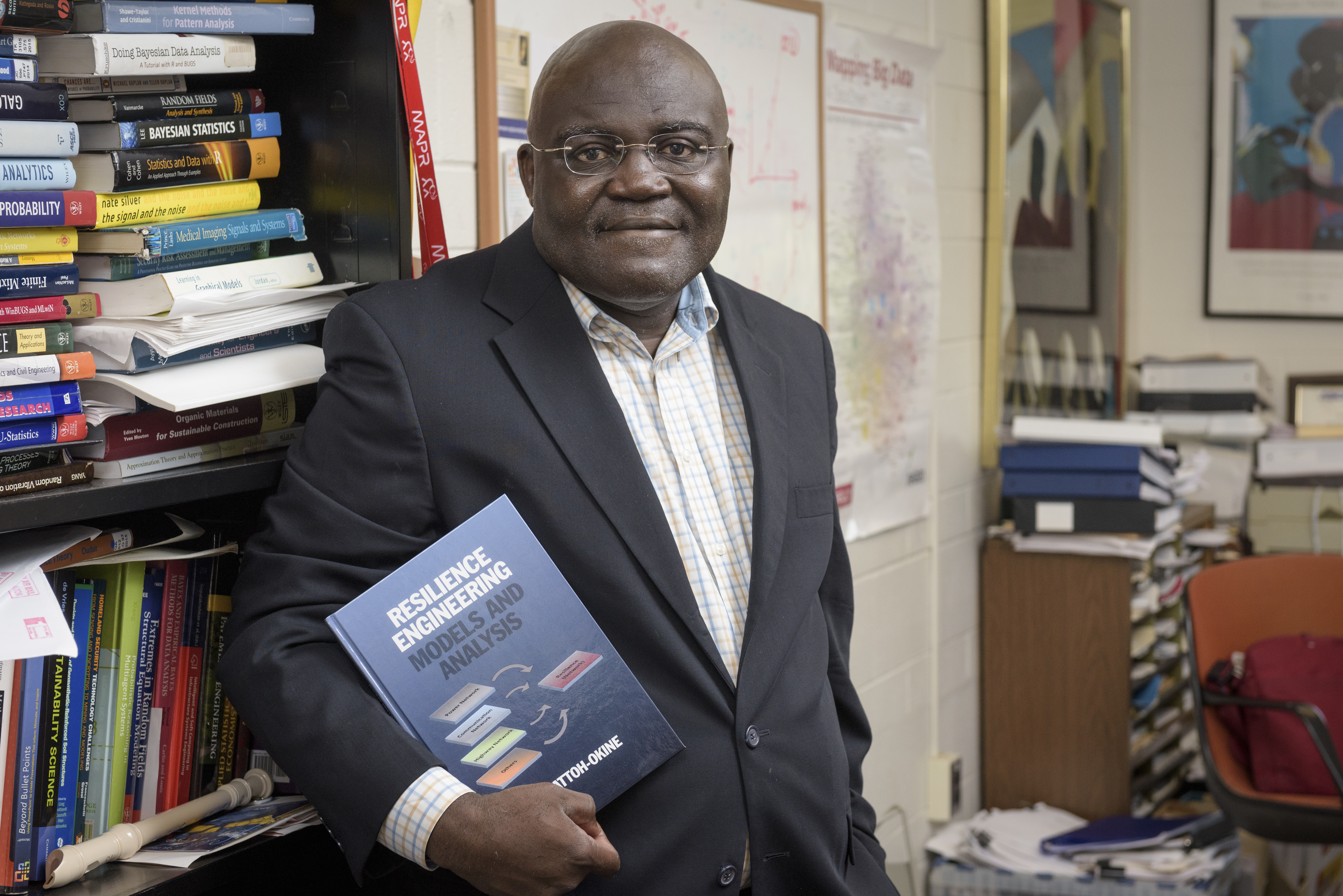Shad restoration
CANR student helps WRA try to improve shad population in White Clay Creek
11:46 a.m., Oct. 5, 2011--While some students spent their summer vacations taking a break from college course work, Chelsea Halley was immersed in an eight-week study aimed at improving the shad population in White Clay Creek.
The internship was funded by the Delaware Water Resources Center, within the College of Agriculture and Natural Resources (CANR), and Halley, a senior in the college, was part of a research team that surveyed seven dams along White Clay Creek that restrict fish passage.
People Stories
'Resilience Engineering'
Reviresco June run
The shad restoration project is being overseen by the University's Water Resources Agency, a program unit of the Institute for Public Administration.
Halley explained that some of the dams were built in the 1700s and that they once served a purpose, such as diverting water to mills, but have long since been rendered unnecessary.
Because of this, a five-year plan was created in order to remove all seven dams from White Clay Creek, with the first dam being removed in November. Halley explained that removing the dams is vital to restore the shad populations because “shad must swim upstream to spawn, but are restricted because of the dams. American shad and hickory shad were once a thriving fish in the White Clay Creek, but their population has diminished significantly. Downstream from the dams, some shad have been detected, but upstream none have been found.”
Unlike salmon, which are able to leap over the dams, shad can’t make it over the structures and Halley explained, “It is imperative to their survival that we remove the dams.”
Halley estimated that she worked between 20-25 hours per week and she measured the dams using diverse tools ranging from a large measuring stick to an electronic level. She even used a kayak and measuring tape to figure out the depth at 10-foot intervals along each dam’s cross section. Said Halley, “We surveyed 100-foot cross sections of the creek 1,000 feet downstream and 1,000 feet upstream of each dam.”
Halley then would input the results into a computer model and diagram each cross section that was measured.
After discovering the internship through the UD website, Halley contacted Gerald J. Kaufman, director of the Water Resources Agency, and was drawn to the shad restoration project because it involved a lot of hands-on field work, which she said has been the most beneficial aspect of her internship.
Kauffman became Halley’s adviser for the research project, which began in June and runs through the spring of 2012. Halley now works at the Water Resources Agency office for about 10 hours a week as she continues to work on the shad restoration project and other WRA projects.
After the first dam is removed in November, Halley explained that they will start comparing the new data about “the water quality and shape of the creek to the data that my research team and I collected over the summer.”
Halley said that she is proud that her internship allowed her to be a part of Delaware’s history, explaining that shad were once very plentiful and of great economic importance in the First State. “It is a great feeling knowing that the work we did is being used to benefit the environment in such a monumental project. This will be the first time in hundreds of years that shad will really have a shot at multiplying and succeeding.”
For now, Halley is relishing the opportunity to put to use all of the techniques that she learned over the summer in the field of water resources and to continue her education in the field.
Other students involved in the project include: Sarah Ackerman, a CANR senior; Seth Olson, an environmental studies student in the College of Earth, Ocean, and Environment; Katherine Adami, a senior environmental studies major with a concentration in environmental law, policy and politics; Kayla Iuliano, a junior Honors Program student majoring in environmental science; Ian Kaliakin, a sophomore environmental science major; and Erica Addonizio, a sophomore chemical engineering major.
Article by Adam Thomas













